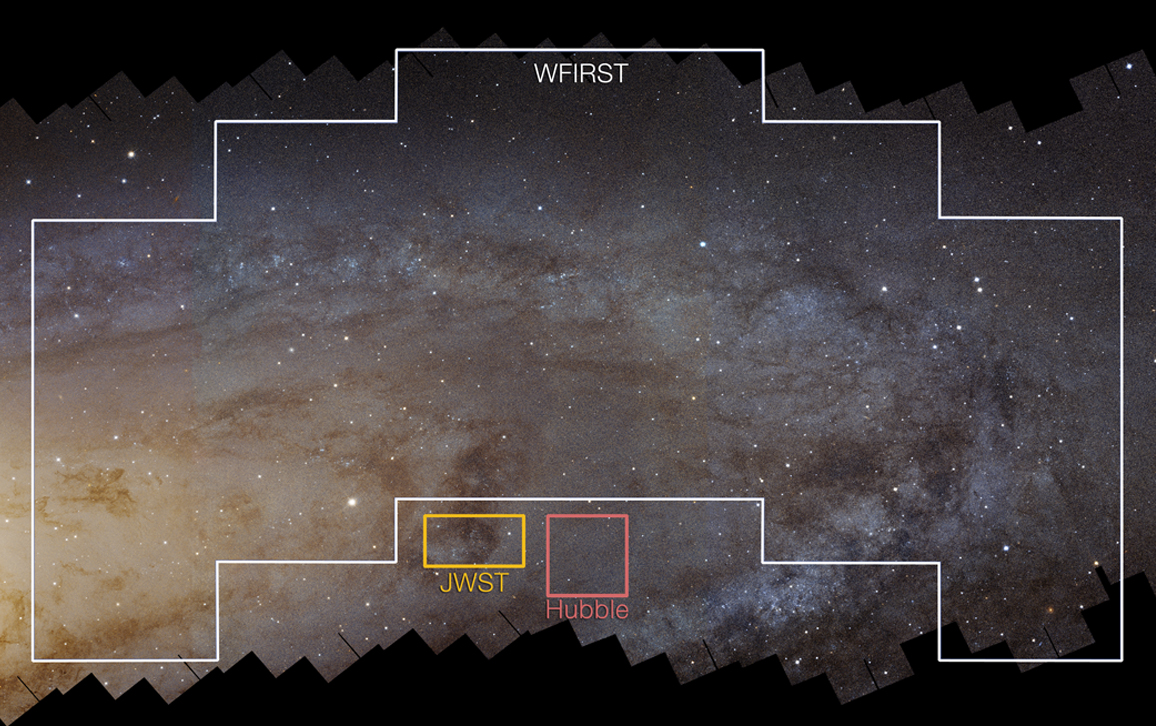At some point this decade, a new space observatory will be launched into orbit; one unlike any that we have seen before with extraordinary equipment and capabilities. WFIRST, the Wide-Field InfraRed Survey Telescope, could potentially revolutionize what astronomers know about our universe and how it behaves by focusing on three major categories: dark energy, exoplanet detection, and infrared astrophysics.

WFIRST has two major features that make it stand out above other observatories within its niche: it has an enormously wide field of view (roughly 100 times the area of Hubble’s while maintaining the same level of resolution), as well as being equipped with a coronagraph. Coronagraphs block out the glare from a star’s corona to allow its observatory to directly observe things such as the planets that may orbit the star, and protoplanetary disks if the star happens to be younger. Coronagraphs have been utilized in the past with observatories like Hubble, but WFIRST’s coronagraph will be far more advanced and sophisticated.

To study dark energy, WFIRST will use its primary mirror, which has a diameter comparable to Hubble’s, as well as its wide-field instrument. With its immense imaging power, WFIRST can study the distribution of mass and matter throughout the universe and how the distributions may have changed as a result of the universe’s accelerating expansion. There are a handful of other ways in which WFIRST will attempt to study dark energy, but in short, understanding dark energy will unlock the secrets of how our universe came to be and the circumstances of its demise.
hopefully this will work out. I think we may already have a correct explanation among all the explanations for dark energy, but we cannot confirm it without any observation. WFIRST may provide breakthroughs in this area.
LikeLike
This post made me realize just how little we know about so many aspects of our universe. There is still so much to be discovered when it comes to dark matter.
LikeLike
This is so interesting! I’ve always been interested in the study of dark matter and I’m excited to see what more we can learn about our universe using this technology. Hopefully WFIRST will lead to many advances in this field of study.
LikeLike
This telescope seems awesome! It’s so interesting to think how in the matter of a few decades we have far surpassed the capabilities of the Hubble Telescope. I also love how you mention the demise of the Universe, something we rarely consider when we talk about our currently expanding universe. It’s scary to think there may be an end to the universe itself.
LikeLike
I’m assuming this is a NASA project (partly because that’s your image source). Something I personally rarely think about is: do other countries’ space programs have similar plans? I believe all of the telescopes mention here (Hubble, Webb, WFIRST) are all NASA projects. Other countries like China and Russia have ambitious space programs- it wouldn’t surprise me if either country eventually launched a space telescope of their own.
LikeLike
TA Response:
WFIRST will most certainly provide a wealth of knowledge for many different disciplines in astronomy.
What still blows my mind is that the telescope is one of a pair gifted to NASA in 2012 from the National Reconnaissance Office (NRO) intellegence agency who had them just sitting in a room somewhere!
LikeLike